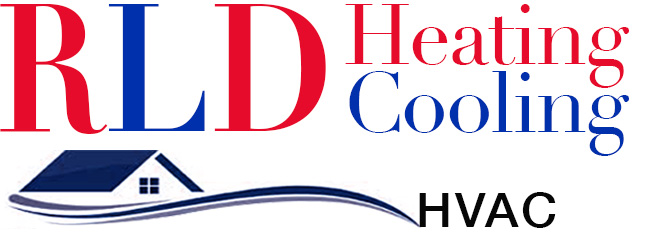Single-Stage vs. Two-Stage Furnace in Los Angeles: The Better Option!
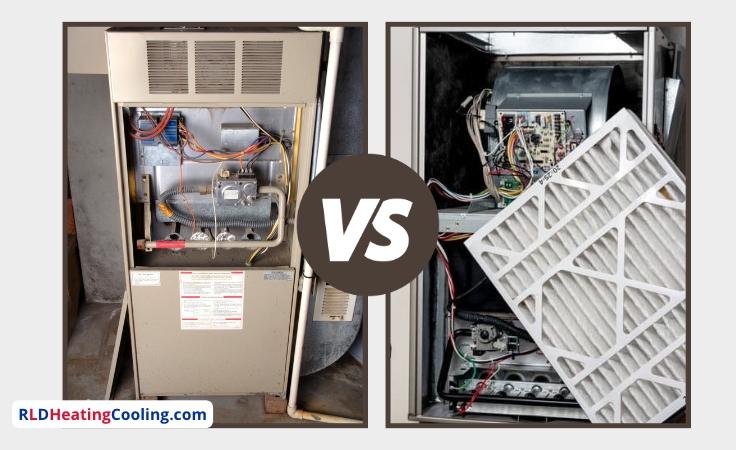
It is the most common question people experience when searching for the best home heating solutions.
And sometimes, we need to be made aware of what both of these terms even mean.
But we have good news for you!
In this blog, we will discuss everything related to single- and two-stage furnaces. Here you will get to learn the following:
- What are the heating stages?
- What is a single-stage furnace?
- What is a two-stage furnace?
- The main differences between single-stage and two-stage furnaces
- The advantages of both
And many other things, including our HVAC services.
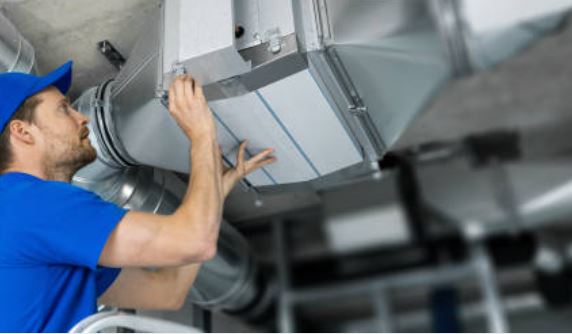
call 818-210-6669
Contact us 24/7 for your HVAC needs
So, if you’re searching for answers to the best ways to heat your home, keep reading, and all your doubts will be solved.
What are the heating stages?
Before comparing single-stage and two-stage furnaces, let’s first understand what heating stages are.
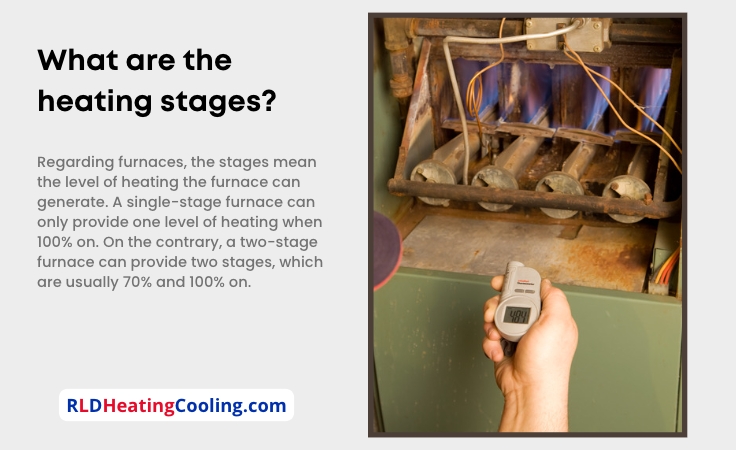
Regarding furnaces, the stages mean the level of heating that the furnace can generate. A single-stage furnace can only provide one level of heating when 100% on. On the contrary, a two-stage furnace can provide two stages, which are typically set at 70% and 100%.
A single-stage furnace can only provide heat at full blast, while a two-stage unit can blow heat at 70% of its maximum capacity at the first stage and 100% at its maximum capacity. All in all, the second stage comes with a complete blast.
There are also modulating furnaces, also known as variable speed furnaces, whose heating output varies between 40% and 100% at any given point in time. These furnaces provide even finer heat control. You can have both of these furnaces installed by your local HVAC technician.
What is a Single-Stage Furnace
A single-stage furnace is the least complicated system of the two systems we will discuss. It comprises only two settings, i.e., on and off. The appliance runs at full speed or is completely turned off.
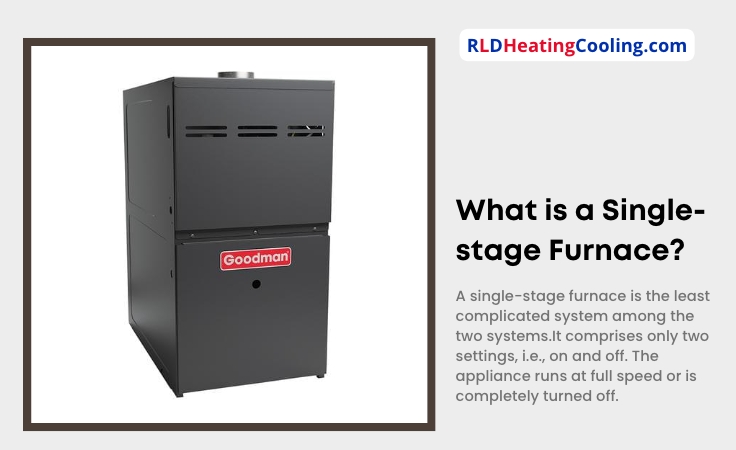
However, the design structure has certain disadvantages. It is less energy-efficient than newer designs, and sometimes the system heats the area around it faster than the rest of the room.
It causes the thermostat to think that your entire house temperature has reached the set target, and it turns off the furnace before your entire house is heated evenly.
What is a Dual-stage Furnace
Two-stage or dual-stage furnaces have three settings: off, on (low mode), and on (high mode). Mostly, the furnace runs on lower settings. The equipment switches to a higher setting if the weather gets freezing.
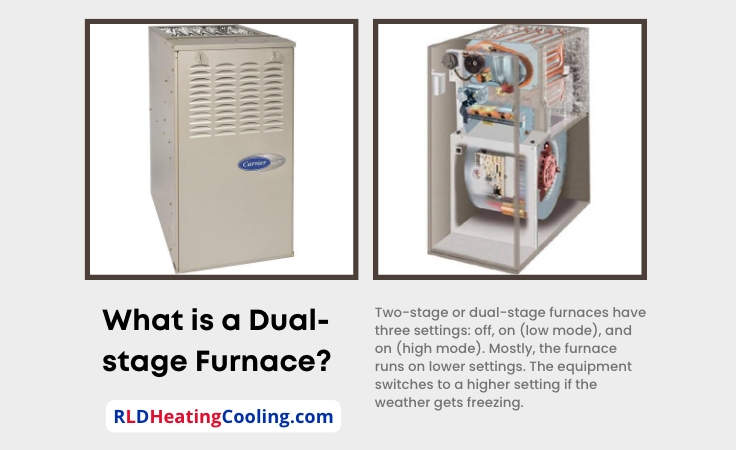
Having two ‘on’ modes helps the two-stage furnace to reduce temperature fluctuations and heat your entire house more efficiently & evenly compared to a single-stage furnace.
However, with higher efficiency comes higher unit costs. Usually, the two-stage furnaces have higher costs, and you must pay several hundred dollars more than the single-stage ones.
6 differences between Single-stage & Dual-stage Furnace
Single-stage and dual-stage furnaces are the two most common heating furnaces available. They are often paired with cooling systems, such as air conditioners, to provide both heating and cooling.
While they both heat your house by burning natural gas, they differ in how they distribute the heat.
Single-stage vs. two-stage triggers a lot of differences, and here are the top 5 of them:
Single-stage vs. Two-stage Furnace difference #1: Heat control
Since two-stage furnaces have high and low settings, they can provide more even and stable heating by operating on the low setting for an extended period.
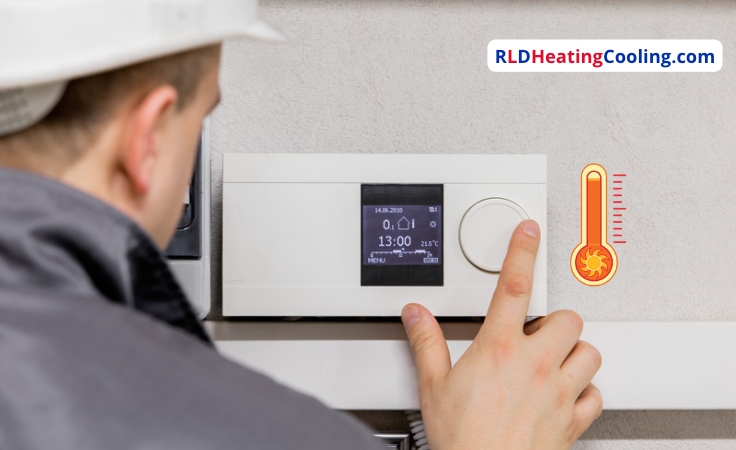
Depending on the brand and model, a 2-stage furnace will operate at 65 to 70% of its total capacity, keeping your living space heated and with no cold spots. When you need to heat your home quickly, these systems can run at full or 100% capacity.
On the other hand, single-stage furnaces can only run at high settings or 100% capacity.
Since they run on a 100% setting, they heat your home quickly, leaving several cold spots and having a temperature swing of up to 5°F before kicking back on!
In terms of comfort, the two-stage unit yields the best results.
Also read: Heat Pump vs. Furnace.
Single-stage vs. Two-stage Furnace difference #2: Efficiency
The efficiency of all your commercial and residential furnaces is measured in AFUE, which stands for Annualized Fuel Utilization Efficiency. (1)
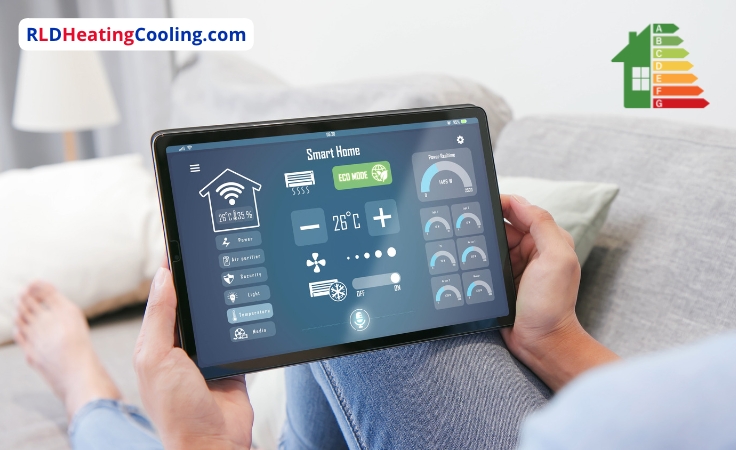
AFUE is used to measure the thermal efficiency of a furnace throughout the year, rather than just its peak conversion efficiency.
In basic terms, it measures the amount of gas or electricity transferred into usable heat when the furnace is on.
With the technological advancements, every furnace comes with a minimum of 80% AFUE, with some systems achieving a high efficiency of 90% or higher.
However, a two-stage gas furnace can achieve greater efficiency than a single-stage furnace.
If you’re looking for furnaces with even better efficiency than the two-stage models, consider a modulating furnace or gas valve, also known as variable capacity or speed units.
Single-stage vs. Two-stage Furnace difference #3: Cost
Single-stage furnaces are the simplest in their mechanical design and are usually less expensive than two-stage units with the same heating capacity.
For instance, a 120,000 BTU 96% AFUE two-stage furnace costs around $ 1,500 to $ 1,800, while a 120,000 BTU single-stage unit with 80% AFUE ranges from $ 1,000 to $ 1,200.
Regarding furnace repair costs, the two-stage furnace consists of additional parts and components that operate in two stages.
Therefore, if any of those components fail, additional repair charges will be incurred.
And you have to start looking for heating repair services near me.
Since the two-stage furnaces are more energy-efficient, their monthly energy costs tend to be lower than those of the single units.
However, some single units are also rated 95% AFUE, equivalent to dual-stage furnaces.
Single-stage vs. Two-stage Furnace difference #4: Noise
The blowers of each type of furnace make noise. Though the furnace fans of both the single and dual-stage furnaces make noises, they are only loud if you sit right next to them.

However, when running at full power, the single-stage furnace blower produces noises equivalent to those of the dual-stage furnace running slowly.
Single-stage vs. Two-stage Furnace difference #5: Air filtration
Since the two-stage furnaces run longer, they absorb or pull more air from the ductwork.
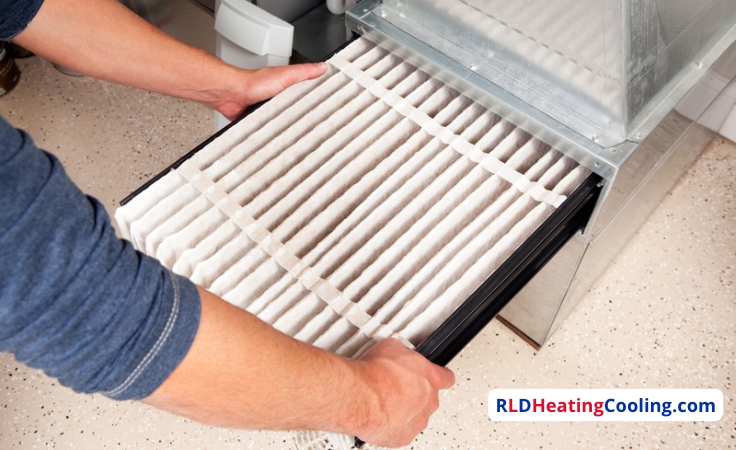
Therefore, more air passes through the filter. So, the indoor air quality of your house will be better if you own a two-stage furnace.
The primary disadvantage is that the air filters must be cleaned or replaced more frequently than those of single-stage systems.
Also compare: Gas vs oil furnace.
Single-stage vs. Two-stage Furnace difference #6: Humidity control
A two-stage furnace generates more consistent and even temperatures and humidity because it runs more often at lower speed settings.
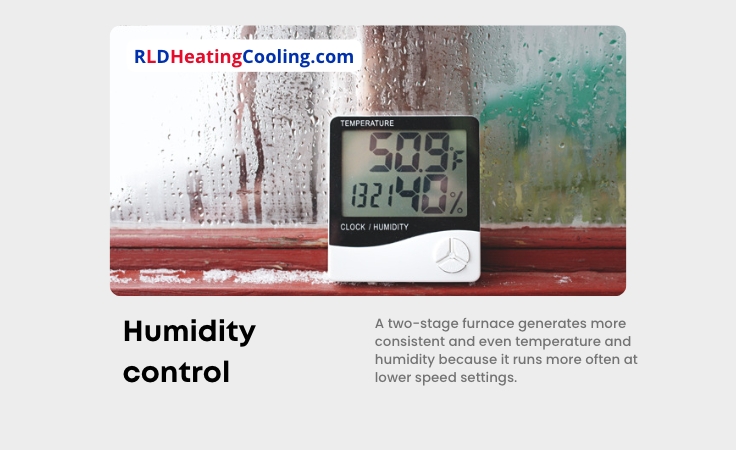
The single-stage unit runs at 100% speed every time it is on and dries up the air faster.
For optimal humidity control, it is advisable to use a whole-house humidifier attached to your furnace, as it can provide better comfort in winter.
While a whole-house humidifier works well with both furnace types, it offers better humidity control when paired with a two-stage unit, as it operates for a longer period.
Advantages of Single-Stage Furnaces
Single-stage furnaces are less efficient than two-stage ones, but you must not consider them inferior to dual-stage ones.
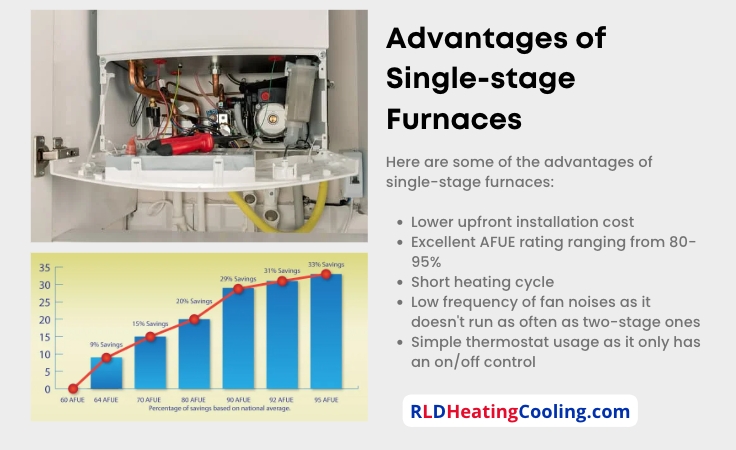
They perform well and can achieve excellent AFUE ratings without a two-stage system.
Here are some of the advantages of single-stage furnaces:
- Lower upfront installation cost
- Excellent AFUE rating ranging from 80- 95%
- Short heating cycle
- Low frequency of fan noises, as it doesn’t run as often as two-stage ones
- Simple thermostat usage, as it only has an on/off control
- Easy and simple heating maintenance
Advantages of Two-stage Furnaces
A two-stage furnace operates at a lower seed capacity of 65% to 70%.
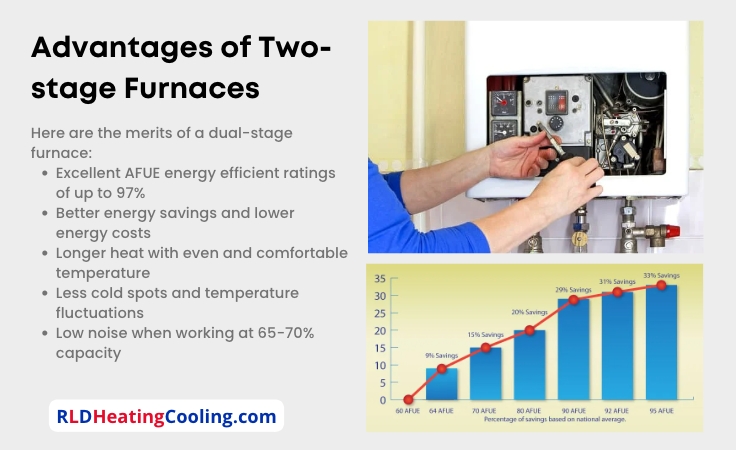
Since it doesn’t run at full speed each time it turns on, it uses less energy and will cost less than the single-stage unit.
Here are the merits of a dual-stage furnace:
- Excellent AFUE energy efficiency ratings of up to 97%
- Better energy savings and lower energy costs
- Longer heat with even and comfortable temperature
- Fewer cold spots and temperature fluctuations
- Low noise when working at 65-70% capacity
Also check out: Heat pump vs gas furnace.
Which option is best for you
One-stage and two-stage units are excellent options for various climate conditions, including moderate temperatures and freezing zones.

Both of them have specific benefits and downsides. However, the single-stage and the dual-stage units are better compared based on their efficiency and heating type.
If you reside in a place that experiences mild winters, a heat pump is a better option, as it can be used both as a heating and cooling agent.
If you want consistent heating, long heating cycles and low energy bills, go for a two-stage furnace. On the other hand, a single-stage unit is a better option if you prefer lower upfront costs and a simpler heating system with shorter heating cycles.
Also read: Heat Pump vs Electric Furnace.
HVAC services at RLD
If you’re looking for heating, cooling or any other HVAC-related services, we at RLD Heating and Cooling Services can help you.
We are a team of licensed residential and commercial HVAC technicians prepared to solve all your furnace and cooling needs.
Call to book an appointment.
FAQs
Here are some of the questions people usually ask:
Which is better, a single or a 2-stage furnace?
If your house has two or more levels, a two-stage or dual furnace can heat it more evenly than a single-stage furnace for less money compared to the former. If you stay home mostly and are dealing with high energy costs, consider two-stage furnaces, which come in a modern design.
Is it worth investing in a two-stage furnace?
Yes, a Two-stage furnace is worth all the cost and hype. If you own a multi-story home and plan to spend several years there, you can significantly benefit from a two-stage furnace. However, you might not get tremendous or long-term benefits if the situation is otherwise.
Is two-stage or single-stage better?
A two-stage air conditioner is more efficient than a single-stage air conditioner. It acts as a middle ground between low-end and high-end efficiency, and the system’s initial cost will save you more energy costs than a single-stage system. Think of it as gas mileage.
Is a single-stage furnace more reliable?
The single-stage furnace is usually reliable and adequate for heating a small or medium-sized, one-story home. However, if you own a larger home, you may also need to consider a single-stage furnace if you urgently require a replacement for your furnace system or anticipate a move soon.
The primary benefit of a single-stage furnace is that it is less likely to malfunction or require repair, and, most importantly, the repair costs are lower.
Source:
- https://www.eia.gov/todayinenergy/detail.php?id=14051
